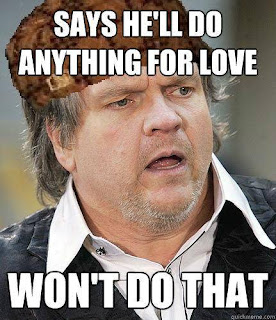Hey there, internets. Three months, huh? I hadn't realized it had been that long. So...how ya been? Good? Good summer? Mine? Oh...it was okay. Went home to Florida for a week and it sucked. But then we went, a few weeks later, to Maine for a week and it was fantastic.
My husband and I found the town we want to retire to. Maine, right? I know. Most people would retire to Florida, but too much badness for me there, so Maine it is! Anyway, the town we chose, that we kind of randomly decided to stop in, was Belfast. They have two or three independent bookstores there. And one of those bookstores has a science slant, so...there you have it. Our dream town.
Otherwise, our summer was good, I guess. Too many stomach bugs for the summer, but no big bad health thing, so that was good. Let's see...what else? Not much! My four year old was home with me a lot, especially for the last few weeks of summer and he was in a tough, pain-in-the-ass stage. So, not good.
It's been great that they're back to school now. Starting to feel like fall here too.
What I really wanted to write to you about (besides the fact that I just needed to write something, for Chrissakes) was that something interesting happened on my daughter's Back to School night at her school a few weeks ago. Well, nothing interesting (at all) happened actually at the Back to School event at her school, but something interesting happened after.
Truthfully, Back to School nights are difficult for me, on account of my anti-socialness, generally. Just awkwardness galore. This one was mercifully short. My daughter's teacher has been there for decades, it seems, and she really doesn't give a rat's ass (again - haven't said this in a while, but I apologize for my profanity, 18th century Phebe - truly) about what the principal does or does not want, so she (the teacher) did not play the multitude of youtube videos that the principal told all the teachers to play.
Mostly the videos were because we couldn't have a big assembly, for whatever reason, and the PFA still needed to give us their spiel. Plus the principal herself always gives a speech. What I heard, though, later, was that because of the big demand on their servers, or something, that the videos stopped every two seconds or so to reload. Good Christ, that's annoying. So, thanks Mrs. C, for dismissing us early and thereby pissing off your boss (which generally isn't a good thing). Sincerely, thanks.
Alright, now to what happened. I live through the woods from the school. Less than a block through the woods (distance-wise). But, you know, it's the woods. So while I walked to the event through the woods, I don't like walking there at night, because...woods. There are deer herds that move through the woods, for real, and I didn't want to startle anyone. Least of all myself.
So, the other, non-woods way to the school is about two blocks on a busier street. I took that route home, in the dark. Besides the fact that I got annoyed with myself for being so fearful, (For real, me. What the hell? I'm tired of being afraid. Really. I think I'll make that a new life goal - to nut the fuck up. I really annoy myself.) something cool happened.
On that route home, I walk past a house built in 1756 (and not modified at all in the 19th or 20th centures, so still in its original state, more or less). I believe that John and Phebe Taylor began construction on that house and may have lived there shortly before selling it. In any case, John's brother Edward ended up buying it decades later and died there, passing the house down to his family members. It's now a museum and lovely. I've written about it before - Marlpit Hall.
What happened was this. Here I was, walking along, not thinking about anything except maybe, I hope I don't get stabbed to death tonight. (For real - annoying.) When suddenly, I look up and see lights on in Marlpit Hall. I say lights, but it honestly, appeared to be more candlelight that I saw. But it wasn't actually lights (or candles) that were lit in the house. It was the reflection of a streetlight. For a split second, though, it was like someone lived there. It's been empty for 150 years, at least. Probably two hundred years. But, for that second, it wasn't.
And it really stopped me in my tracks. And it made the whole sucky night worth it. And it made me realize, that really, these were just people who used to settle in for the night. Who tucked their children in, who thought about what they had to do the next day, who thought about the people they missed, maybe - their parents, or siblings, or, sadly, maybe a child they lost. I don't know, maybe that's too morbid. Maybe they just took out a book and read a little before blowing out the candle. Maybe they got busy. Who knows. But, they were just people, in their houses, going on with their lives. Their vastly different lives, of course, but there had to be similarities, right?
In any case, it was cool and I thought I'd write about it here, in order to get this whole thing ramped up again. Until next time, then...
A MORE PERFECT HEAVEN
How Copernicus Revolutionized the Cosmos
By Dava Sobel
Illustrated. 273 pp. Walker & Company. $25.













